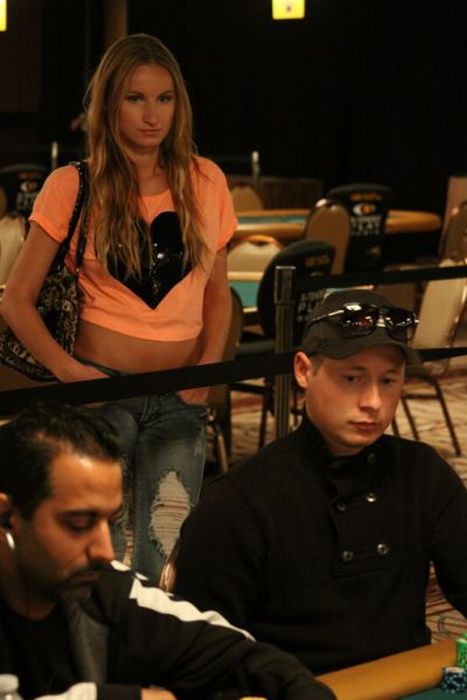|
|
2011 World Series Of Poker Girls
|
History
In the 1937 edition of Foster's Complete Hoyle, R. F. Foster wrote: "the game of poker, as first played in the United States, five cards to each player from a twenty-card pack, is undoubtedly the Persian game of as nas." By the 1990s some gaming historians including David Parlett started to challenge the notion that poker is a direct derivative of As Nas. There is evidence that a game called poque, a French game similar to poker, was played around the region where poker is said to have originated. The name of the game likely descended from the Irish Poca (Pron. Pokah) ('Pocket') or even the French poque, which descended from the German pochen ('to brag as a bluff' lit. 'to knock'). Yet it is not clear whether the origins of poker itself lie with the games bearing those names. It is commonly regarded as sharing ancestry with the Renaissance game of primero and the French brelan. The English game brag (earlier bragg) clearly descended from brelan and incorporated bluffing (though the concept was known in other games by that time). It is quite possible that all of these earlier games influenced the development of poker as it exists now.
A modern school of thought rejects these ancestries, as they focus on the card play in poker, which is trivial and could have been derived from any number of games or made up on general cardplay principles. The unique features of poker have to do with the betting, and do not appear in any known older game. In this view poker originated much later, in the early or mid-18th century, and spread throughout the Mississippi River region by 1800. It was played in a variety of forms, with 52 cards, and included both straight poker and stud. 20 card poker was a variant for two players (it is a common English practice to reduce the deck in card games when there are fewer players). The development of poker is linked to the historical movement that also saw the invention of commercial gambling.
English actor Joseph Crowell reported that the game was played in New Orleans in 1829, with a deck of 20 cards, and four players betting on which player's hand was the most valuable. Jonathan H. Green's book, An Exposure of the Arts and Miseries of Gambling (G. B. Zieber, Philadelphia, 1843), described the spread of the game from there to the rest of the country by Mississippi riverboats, on which gambling was a common pastime. As it spread north along the Mississippi River and to the West during the gold rush, it is thought to have become a part of the frontier pioneer ethos.
|
|









